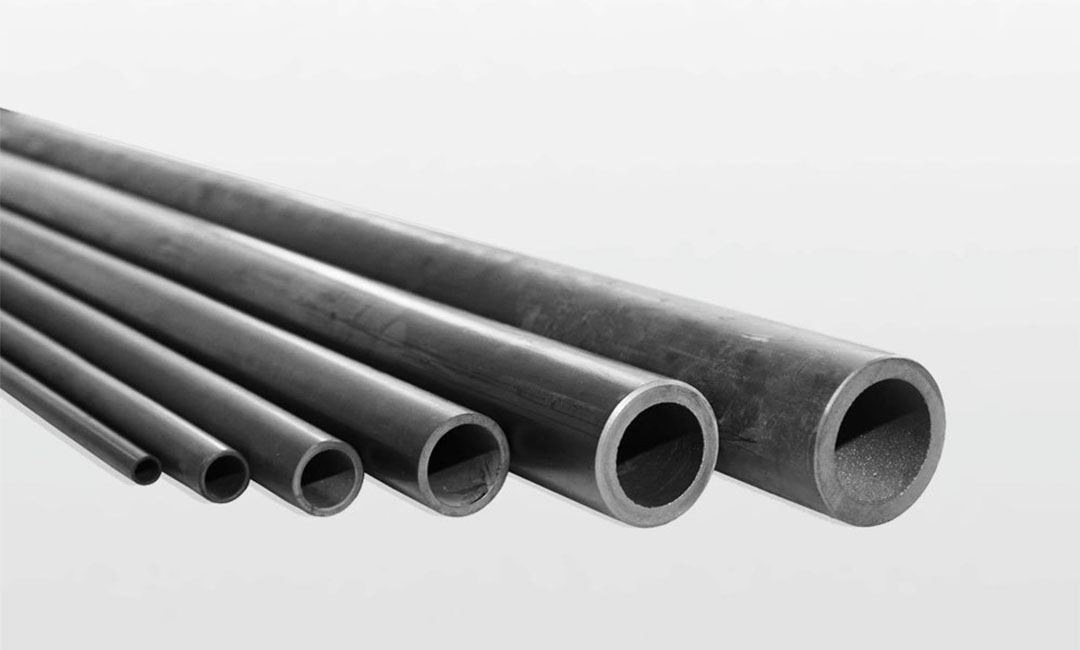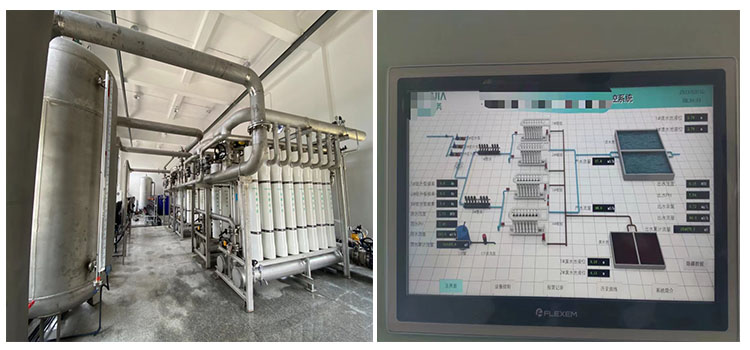Benefits of Using Advanced SiC Membrane Systems for Wastewater Treatment
Wastewater treatment is a critical process that helps protect the environment and public health by removing contaminants from water before it is discharged back into the environment. Advanced SiC membrane systems have emerged as a promising technology for wastewater treatment due to their high efficiency and durability. In this article, we will explore the benefits of using advanced SiC membrane systems for wastewater treatment.
One of the key benefits of advanced SiC membrane systems is their high filtration efficiency. SiC membranes have a unique structure that allows them to effectively remove a wide range of contaminants from water, including bacteria, viruses, and organic compounds. This high filtration efficiency ensures that treated water meets stringent quality standards and is safe for discharge into the environment.
In addition to their high filtration efficiency, advanced SiC membrane systems are also highly durable. SiC membranes are made from a material known for its exceptional strength and resistance to corrosion, making them ideal for use in harsh wastewater treatment environments. This durability ensures that SiC membranes have a long service life and require minimal maintenance, reducing operating costs and downtime.

Another benefit of using advanced SiC membrane systems for wastewater treatment is their scalability. SiC membranes can be easily scaled up or down to accommodate varying treatment capacities, making them suitable for a wide range of applications, from small-scale residential systems to large municipal treatment plants. This scalability allows for greater flexibility in system design and operation, ensuring that wastewater treatment facilities can meet changing demands and regulatory requirements.
Furthermore, advanced SiC membrane systems offer significant energy savings compared to traditional treatment methods. SiC membranes have a lower fouling propensity than other membrane materials, reducing the need for frequent cleaning and maintenance. This results in lower energy consumption and operating costs, making SiC membrane systems a cost-effective solution for wastewater treatment.
In addition to their high efficiency, durability, scalability, and energy savings, advanced SiC membrane systems also offer environmental benefits. By removing contaminants from wastewater, SiC membranes help protect water sources and ecosystems from pollution, ensuring a sustainable and healthy environment for future generations. This environmental stewardship is essential for meeting regulatory requirements and promoting sustainable development.
Overall, the benefits of using advanced SiC membrane systems for wastewater treatment are clear. From high filtration efficiency and durability to scalability, energy savings, and environmental benefits, SiC membranes offer a comprehensive solution for treating wastewater effectively and responsibly. As the demand for clean water continues to grow, advanced SiC membrane systems will play a crucial role in ensuring a sustainable and healthy future for all.
Comparison of SiC Membrane Systems with Traditional Wastewater Treatment Methods
Comparison of SiC Membrane Systems with Traditional Wastewater Treatment Methods
Wastewater treatment is a critical process that ensures the removal of contaminants from water before it is released back into the environment. Traditionally, wastewater treatment has relied on various methods such as sedimentation, filtration, and chemical treatment. However, these methods often come with limitations in terms of efficiency and cost-effectiveness. In recent years, advanced SiC membrane systems have emerged as a promising alternative for efficient wastewater treatment.
One of the key advantages of SiC membrane systems is their superior filtration capabilities. Unlike traditional methods that rely on physical or chemical processes, SiC membranes use a combination of size exclusion and adsorption to effectively remove contaminants from water. The unique structure of SiC membranes allows for the separation of particles as small as a few nanometers, ensuring the removal of even the tiniest pollutants. This level of filtration efficiency is unmatched by traditional methods, making SiC membrane systems highly desirable for wastewater treatment.
In addition to their superior filtration capabilities, SiC membrane systems also offer significant advantages in terms of durability and lifespan. Traditional wastewater treatment methods often require frequent maintenance and replacement of components due to wear and tear. On the other hand, SiC membranes are known for their exceptional mechanical strength and chemical resistance, allowing them to withstand harsh operating conditions without degradation. This not only reduces the need for frequent maintenance but also extends the lifespan of the membrane system, resulting in long-term cost savings.
Furthermore, SiC membrane systems are highly efficient in terms of energy consumption. Traditional wastewater treatment methods often require significant amounts of energy to operate pumps, mixers, and other equipment. In contrast, SiC membrane systems operate at lower pressures, reducing the energy requirements for filtration. Additionally, the high permeability of SiC membranes allows for faster filtration rates, further contributing to energy savings. This combination of low energy consumption and high filtration efficiency makes SiC membrane systems a sustainable and environmentally friendly choice for wastewater treatment.
Another important aspect to consider when comparing SiC membrane systems with traditional methods is the footprint required for installation. Traditional wastewater treatment plants often occupy large areas of land, making them unsuitable for densely populated areas or locations with limited space. SiC membrane systems, on the other hand, have a compact design that requires significantly less space. This makes them ideal for urban environments where land is scarce, allowing for the construction of wastewater treatment facilities in areas that were previously inaccessible.
In conclusion, advanced SiC membrane systems offer numerous advantages over traditional wastewater treatment methods. Their superior filtration capabilities, durability, energy efficiency, and compact design make them a highly efficient and cost-effective solution for wastewater treatment. As the demand for clean water continues to rise, the adoption of SiC membrane systems is expected to increase, revolutionizing the way we treat wastewater and ensuring a sustainable future for generations to come.
Case Studies Highlighting the Effectiveness of Advanced SiC Membrane Systems in Wastewater Treatment
Wastewater treatment is a critical process that ensures the protection of public health and the environment. With the increasing global population and industrial activities, the demand for efficient wastewater treatment technologies has never been higher. Advanced SiC membrane systems have emerged as a promising solution for improving the efficiency of wastewater treatment processes.
One of the key advantages of SiC membranes is their high chemical and thermal stability, making them suitable for a wide range of applications, including wastewater treatment. These membranes are capable of withstanding harsh operating conditions, such as high temperatures and aggressive chemicals, without compromising their performance. This durability ensures a longer membrane lifespan and reduces the need for frequent replacements, ultimately leading to cost savings for wastewater treatment plants.
In addition to their robustness, SiC membranes also offer superior filtration performance compared to traditional polymeric membranes. The unique structure of SiC membranes allows for precise control over pore size and distribution, resulting in higher permeability and selectivity. This enhanced filtration efficiency enables SiC membranes to effectively remove contaminants from wastewater, including suspended solids, bacteria, and organic compounds, to meet stringent discharge standards.

Several case studies have demonstrated the effectiveness of advanced SiC membrane systems in wastewater treatment applications. For example, a study conducted by researchers at a municipal wastewater treatment plant in Japan found that replacing conventional polymeric membranes with SiC membranes resulted in a significant improvement in water quality. The SiC membranes achieved higher removal efficiencies for various pollutants, such as total suspended solids and ammonia, leading to a cleaner effluent discharge.
Similarly, a pilot-scale study carried out at an industrial wastewater treatment facility in the United States showed that SiC membranes outperformed conventional membranes in terms of flux stability and fouling resistance. The SiC membranes maintained a consistent permeate flux over an extended period, even when subjected to challenging feedwater conditions with high fouling potential. This stability is crucial for ensuring continuous operation and minimizing downtime in wastewater treatment plants.
Furthermore, a field trial conducted at a desalination plant in Australia demonstrated the scalability of SiC membrane systems for large-scale water treatment applications. The SiC membranes exhibited excellent salt rejection rates and permeate quality, making them suitable for brackish water and seawater desalination. The high durability of SiC membranes also proved to be advantageous in reducing maintenance costs and extending the operational lifespan of the desalination plant.
Overall, these case studies highlight the potential of advanced SiC membrane systems to revolutionize wastewater treatment processes by offering superior performance, durability, and cost-effectiveness. As the demand for sustainable water management solutions continues to grow, SiC membranes are poised to play a crucial role in meeting the challenges of modern wastewater treatment. By harnessing the unique properties of SiC membranes, wastewater treatment plants can achieve higher treatment efficiencies, lower operating costs, and reduced environmental impact, ultimately contributing to a cleaner and healthier future for all.

